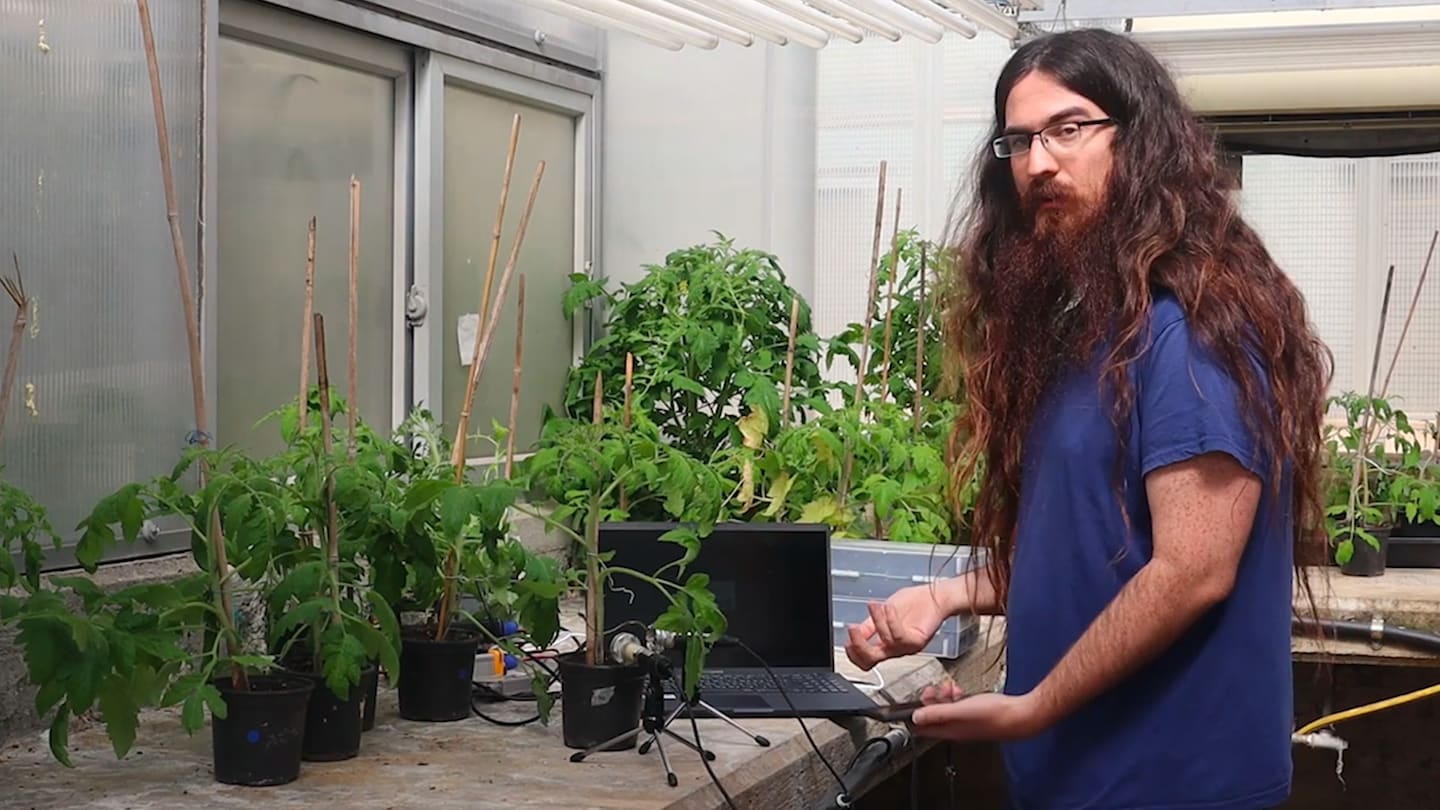“They interact with their environment,” Hadany said. “So it would be a bit of a waste if they were completely deaf and dumb.”
After six years of research, Hadany and his colleagues discovered that plants, when in distress, emit ultrasound that is inaudible to humans. According to a study published last week, plants make clicking sounds when cut or when they become dehydrated or infected – noises that the researchers say this could be their version of a cry for help.
“We always thought plants were silent,” said researcher Yossi Yovel. “And now we realize that they make these sounds quite often and that they are meaningful to some degree.”
The researchers placed plants in boxes in a quiet room and sat two ultrasonic microphones nearby. They studied tomato, tobacco, cactus, corn, wheat and other plants in varying conditions – some had cut stems, some hadn’t been watered in days, and some were undamaged.
The result: The microphone picked up sounds at frequencies between 40 and 80 kilohertz — well above what the human ear can detect. The noises sound like popcorn kernels popping, the researchers found.
Plants in distress generated dozens of sounds every hour and sometimes about one every minute, the team found. Intact plants emitted less than one sound per hour.
“We were happy and surprised,” Hadany said. “It took us a while to really believe there were sounds.”
The researchers said the noises are the sound of popping air bubbles, which plants produce in their xylem, a tissue that displaces water. Plants often lose air bubbles as their water intake decreases, Yovel said.
The rhythms produced depend on the plant and its condition. For example, a dehydrated wheat plant made more frequent and louder noises than a vine that had been cut. Researchers found that dehydrated plants generated more sounds as their condition worsened.
Using artificial intelligence, the researchers said they can identify the type of plant and its condition based on the volume, frequency and tempo of its sounds. But researchers don’t know if other creatures pay attention to noises.
Previous studies have shown that plants interact with their environment. In 2019, Hadany and Yovel found that flowers produced nectar when they detected nearby bees and other pollinators. A May study in Plant Cell found that plants communicate with electrical signals from their leaves.
Hadany and Yovel said they will continue their research in hopes of finding out if damaged plants communicate with animals and other plants. It’s a question that has puzzled other researchers, including a Michigan team that in 1988 discovered that plants make noise when dehydrated. Robert Haack, one of the researchers, wrote in an email that the team could not determine if the insects heard the sounds.
“We didn’t have the right equipment at the time,” Haack wrote.
Hadany and Yovel benefit from more technology to try to determine the answer. For now, they hope their findings will help farmers know when their plants need water or are infected.
“The big question is whether animals, or perhaps some other organism, evolved to use these sounds,” Yovel said. “There is a huge new world of possibilities.”

